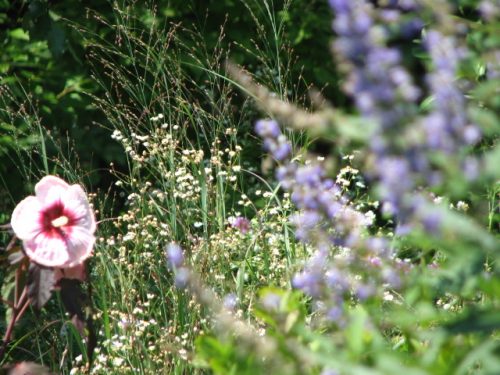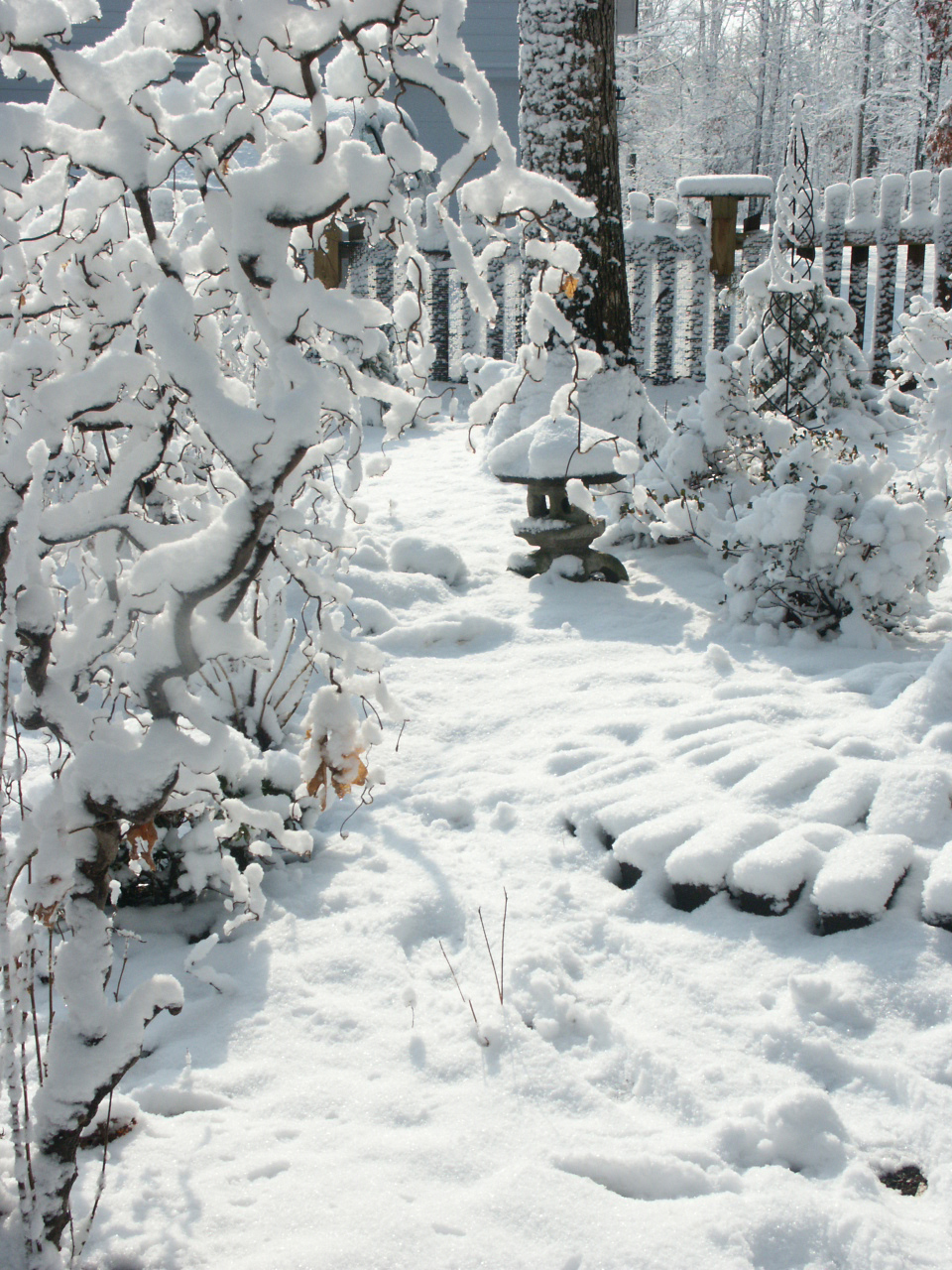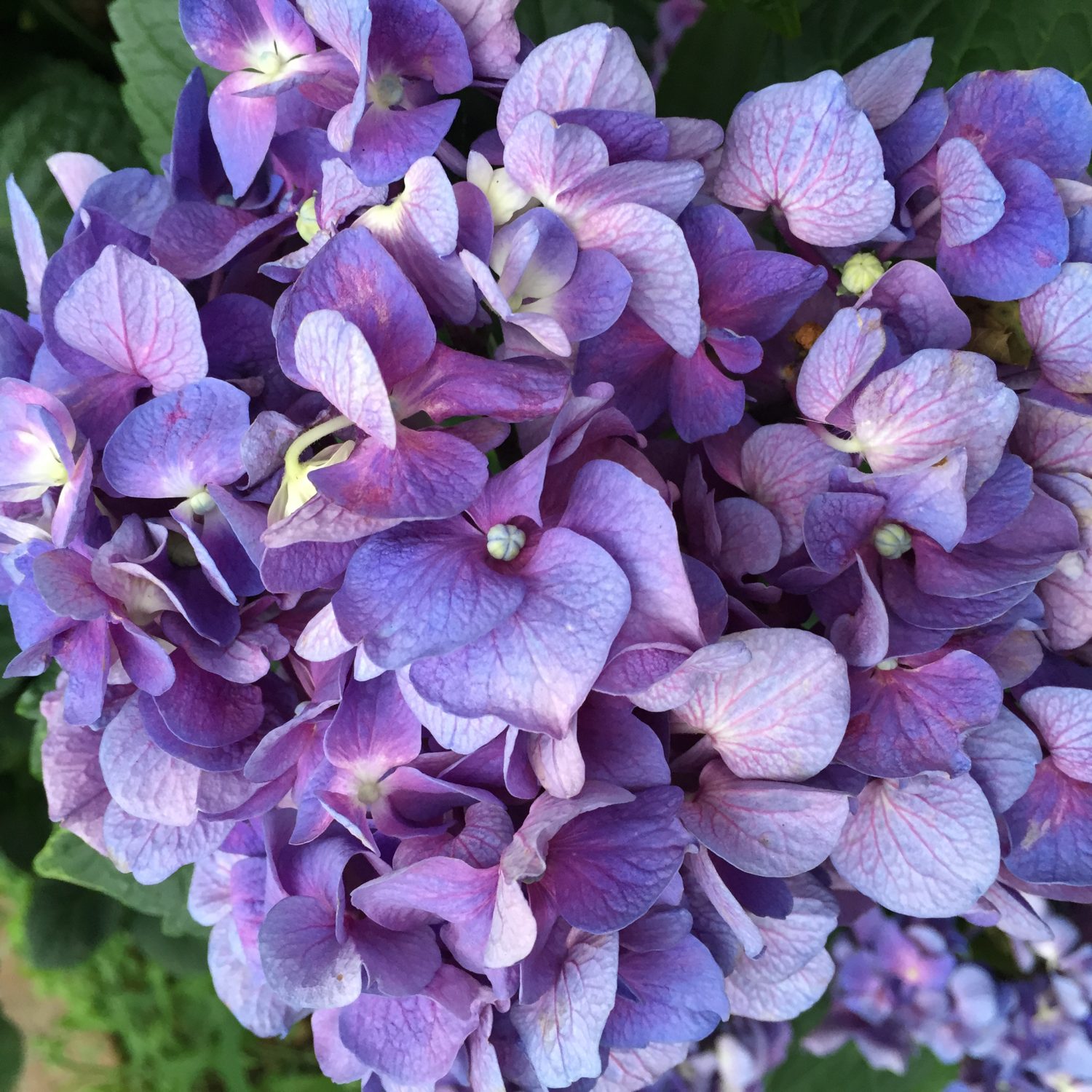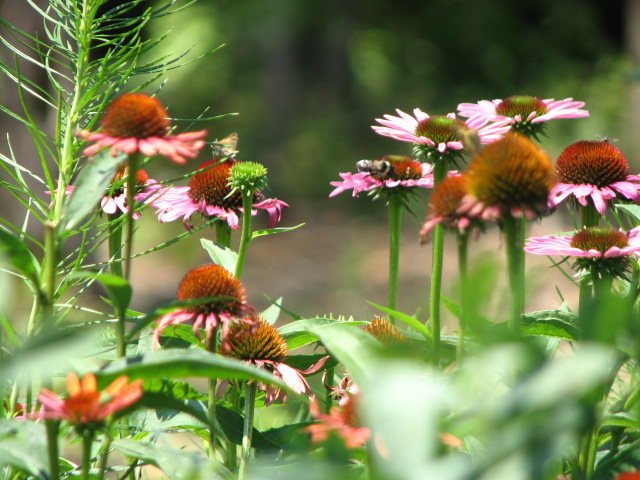
I’ve shared a little of my Portugal travel story, and I’ll get back to that next. But we’re nearing the end of the fall planting season, and I just had to hit the landscape again before winter sets in. I love the winter garden, so those stories will be in the mix as the season rolls on. But right now, plants on the move is the task at hand.

A mixed border is a delight in every season. Russian sage, Shenandoah switch grass, and hardy hibiscus make a great combo.
Fall is, without a doubt, the best time for planting, transplanting, and tweaking. We’ve done plenty of it this season. Occasionally I hire a landscaping crew to . It’s truly amazing what 8 strong men can accomplish in 4 short hours. Yeah!

Harry Lauders walking stick (left) Corylus avellana ‘Contorta’ is a statement plant in the garden. The gnarly and twisty stems are frequently seen in floral arrangements.
Some years ago, we had help with some assertive transplanting. Relocating a twenty year old japanese maple, a large hydrangea, and a Harry Lauders walking stick was a big job. You know Harry Lauders, you just might not think you do. He’s the gnarly and twisty guy you might be curious about. He’s that strange plant that is more beautiful after it’s leaves have fallen. His dramatic stems are frequently used in arrangements. I’m happy to say, every one of those plant are still thriving in their new homes.

Hydrangea macrophylla , otherwise know as mop head hydrangea. I love the purple shades when the blossoms are changing from blue to pink.
Successful transplanting requires a few tricks and techniques. Following these will get your plants off to a great start:
1. When digging, retain as many roots as possible. Digging wider than deeper is a general rule of thumb.
2. Take note of the conditions the particular plants need and transplant them to locations that are similar to their old home, unless you’re correcting that type of issue. This can be a little tricky because the sun has shifted in fall and is very different than summer patterns.

Spreading ground covers have many functions in the garden. Besides being pretty, my fav − no mulch needed! Divide and conquer − replant where needed.
3. Keep the new transplants well watered. Depending on the season and dryness of the soil, every few days may be needed for a settling in period. Always, water deeply to reach the entire root system. And don’t forget, plants need to be watered even in winter as bitter winds can dehydrate foliage.
Hydrangea macrophylla commonly know as mop head hydrangea. I love the purple tones when they are changing from blue to pink and purple.

Echinacea, or it’s old fashion name coneflower, is a happy perennial that can be divided and shared with gardening friends.
4. If you want to wait and replant some things in spring, trim the roots around the plant now. A spade shovel is a great help for this task. Tip pruning the stems and foliage in equal proportions to the root work is a great practice to prepare a plant for moving day. This tip seems to contradict #1 but it doesn’t, because you’re trimming the roots and the foliage. I think of it as a bit of a warning to the plant, saying you’ll be moving soon.
Your plants are waiting for you, so get out there! You’ll be glad you did next spring.
Related posts:
No related posts.
Leave a Reply Cancel reply

More Story
Portugal, off the beaten path!
We arrived in Lisbon late in the afternoon. We took off for the beach and the Algarve the next morning. We'd be back...Subscribe to the Blog
Site Menu
Recent Posts
- What's a gardener to do... in winter?
Jan 22, 2024 - New Year, New Plans!
Jan 1, 2024 - The Thoughtful Host
Dec 7, 2023
- What's a gardener to do... in winter?

You may link to a post or take quotes if credit, including a link back, is given.
You may not take entire posts or photographs without asking.
Permission may be requested using the contact form .












Share On